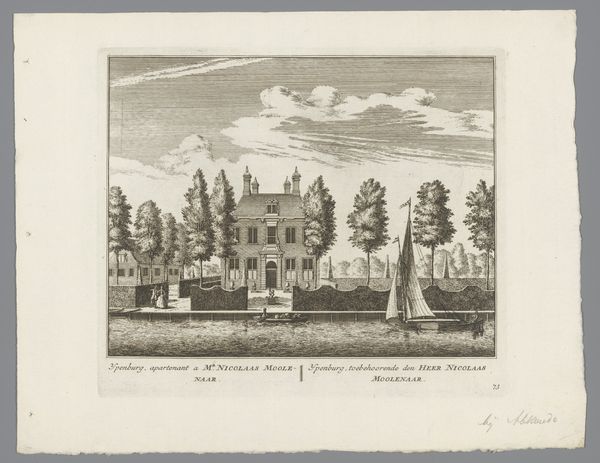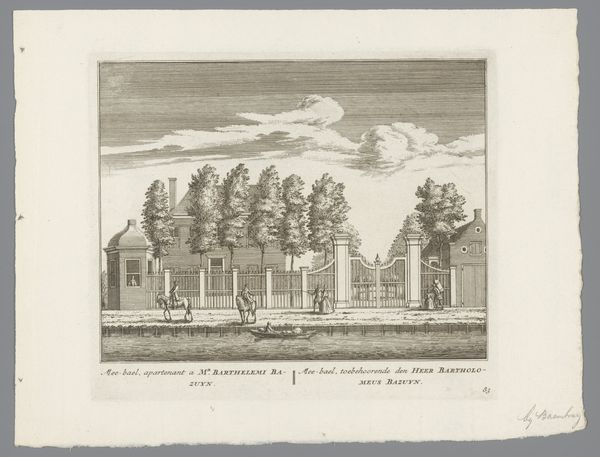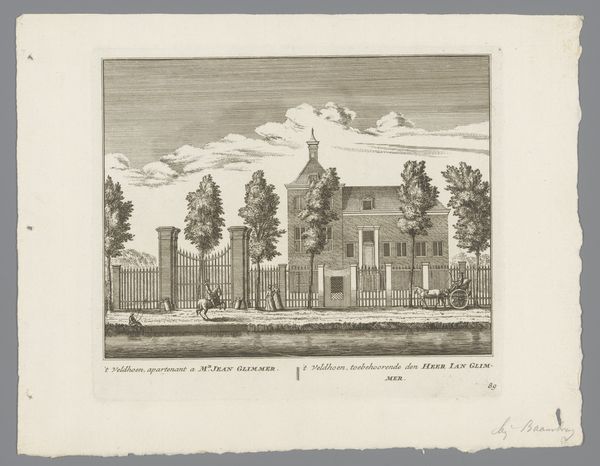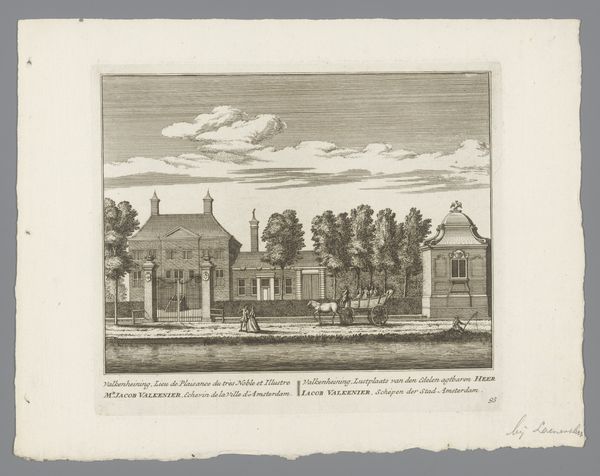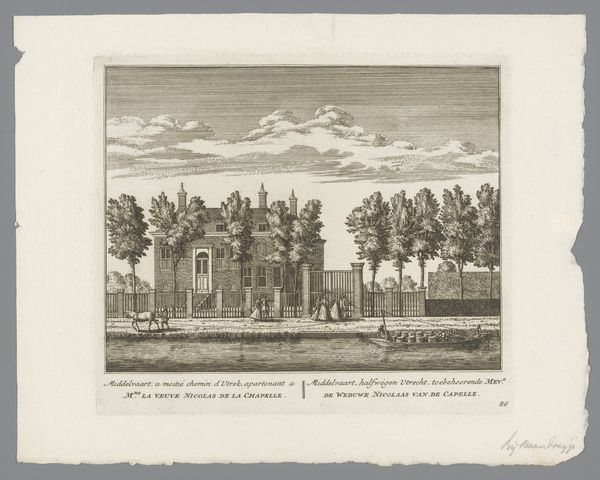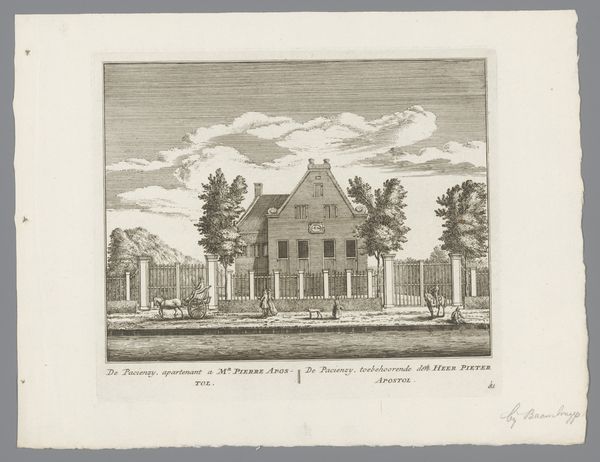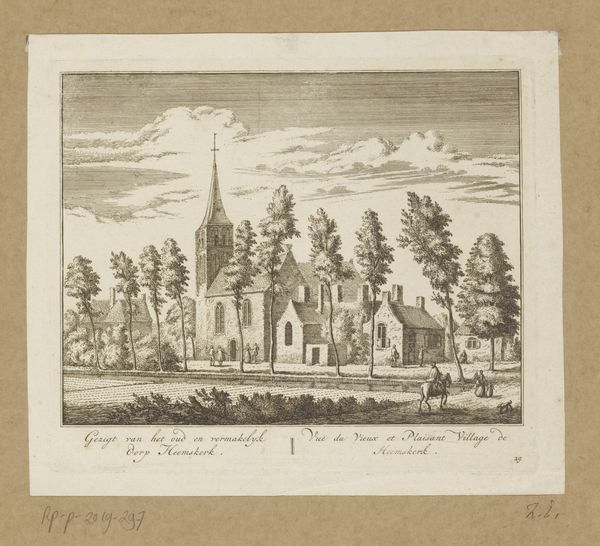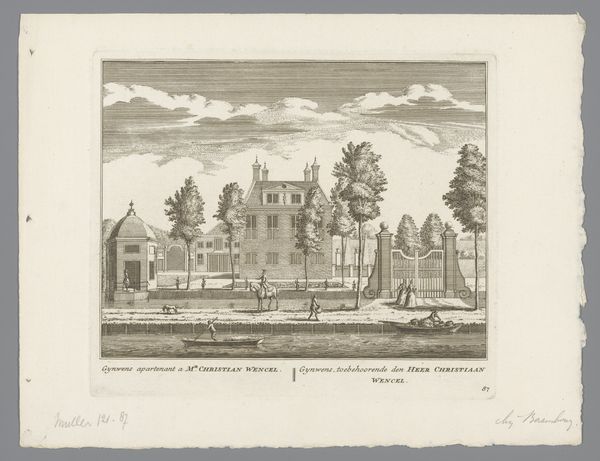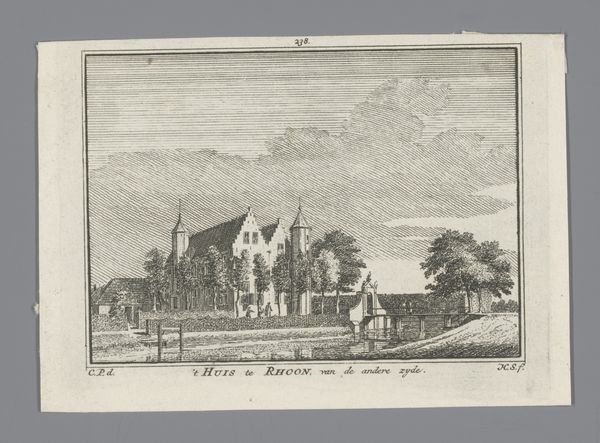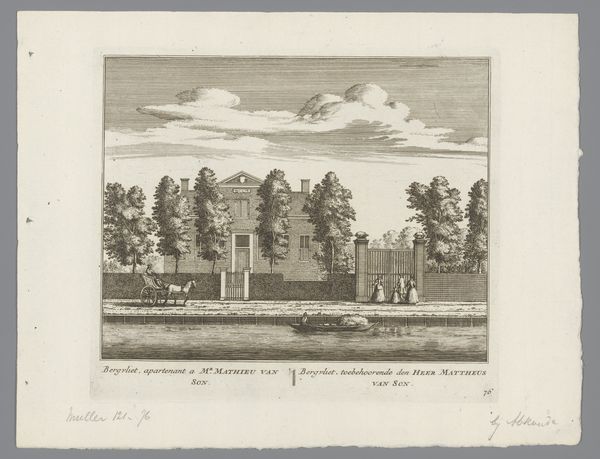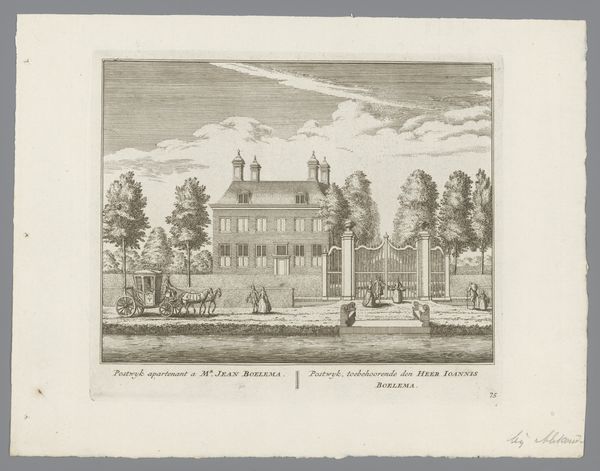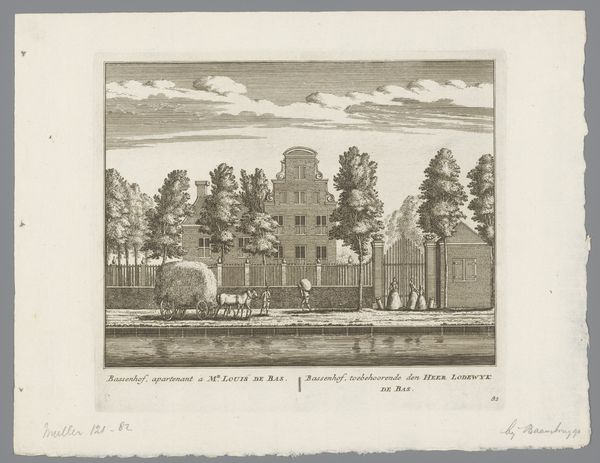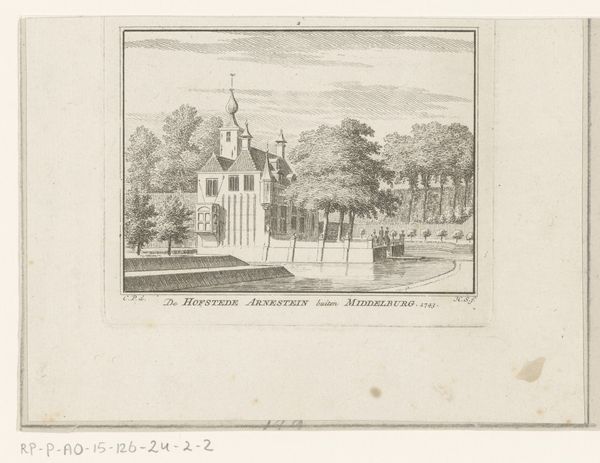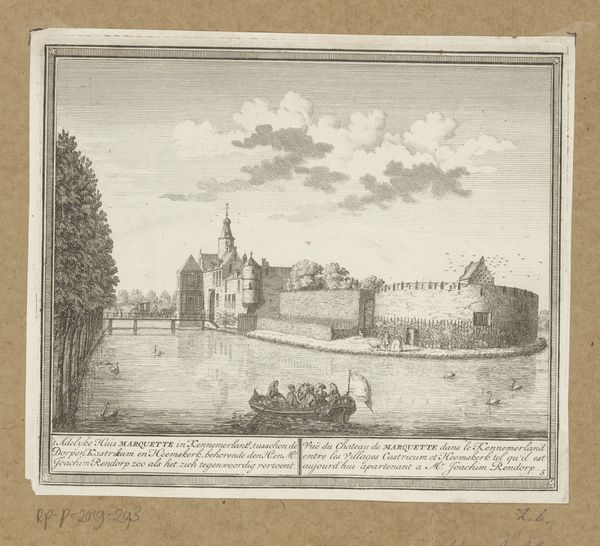
drawing, print, paper, ink, engraving
#
drawing
#
baroque
#
dutch-golden-age
# print
#
landscape
#
paper
#
ink
#
cityscape
#
engraving
Dimensions: height 174 mm, width 200 mm
Copyright: Rijks Museum: Open Domain
Curator: This is "View of the Country House de Haring, near Loenersloot," a 1730 engraving by Abraham Rademaker. What’s your first impression? Editor: Serene. There’s a stillness in the composition, a tranquility achieved through the almost minimalist lines and the way the light is suggested across the building’s facade and the sky. Curator: Rademaker created this during a fascinating period. The Dutch Golden Age had faded, but the reverberations of wealth and power remained. This print offers insight into the lives of privileged women within that specific Dutch social structure. Madame la Veuve Clyburg, to whom De Haring belonged, lived here during the 18th century, and this work is a chance to bring stories of early modern women into our current spaces and conversations. Editor: The architecture is key. Notice the symmetry, the ordered placement of the trees – it reflects a desire for control and balance characteristic of Baroque sensibilities, even in this later period. The lines create planes, building a clear, rational space. Curator: Absolutely, and considering that the "owner" of this beautiful place was a widow gives a sharp twist to that desire for balance, reflecting a societal tension where women, even wealthy landowners, still operated within the confines of a patriarchal structure. It shows both independence and inherent limitation. Editor: It is quite telling that a small, refined print like this could still capture a moment, even with the artist's chosen style to produce with precise details, offering viewers a lens onto a time of changing powers and cultural norms. Curator: I think that tension makes the artwork particularly resonant. It captures the beauty but also the social realities underlying even the most idyllic scenes. It encourages questions regarding ownership, inheritance, and female agency in the Dutch Republic. Editor: It reminds us that even apparently simple works can reveal complex histories when examined thoughtfully. Curator: Precisely, the beauty and subtle critique makes it really worthy of deeper consideration.
Comments
No comments
Be the first to comment and join the conversation on the ultimate creative platform.
